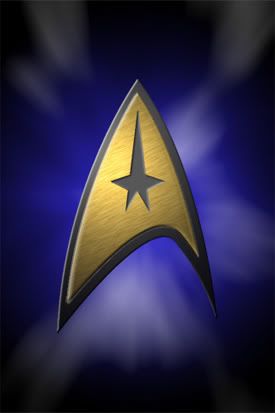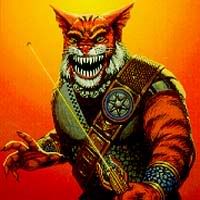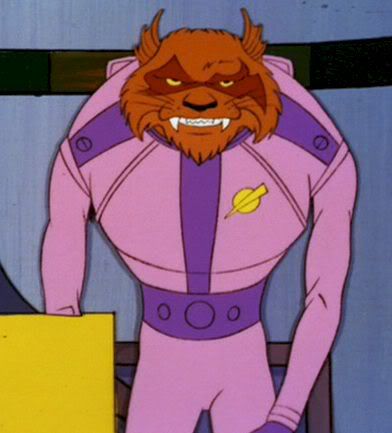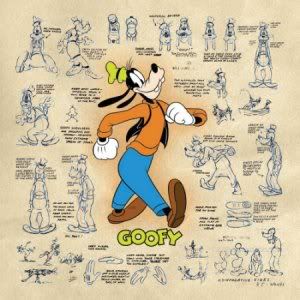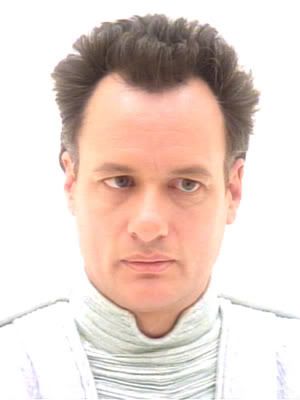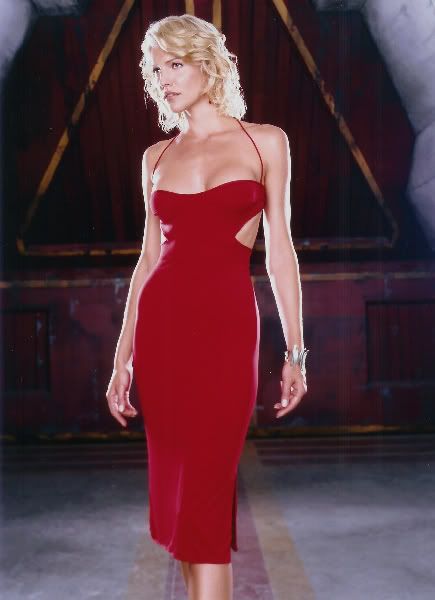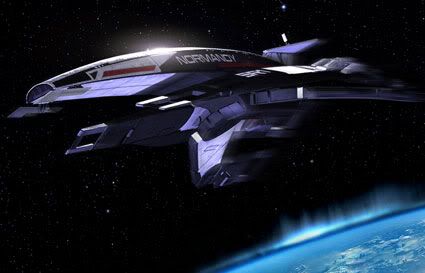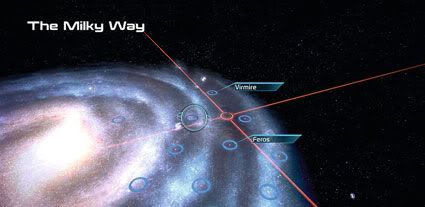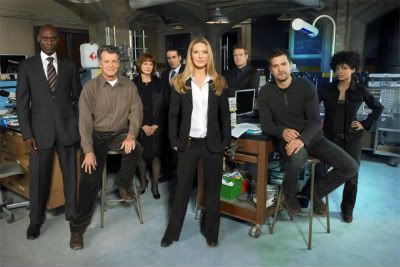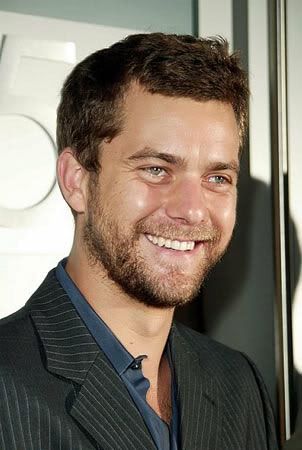
[audio:http://www.blueinkalchemy.com/uploads/mutant_chronicles.mp3]
Adaptations are a good way to cull an established audience from one medium and transplant them into another to generate more revenue and attention for a given work. Just look at the success of The Lord of the Rings, Iron Man and even Twilight. Novels, comic books, even toys have had some success moving from some iteration of the living room to the big screen. Tabletop games, on the other hand, have had a rougher time, and given the disappointment of The Mutant Chronicles, it’s not getting easier any time soon. The film stars Thomas Jane, Ron Perlman, Devon Aoki, Sean Pertwee, Anna Watson and John Malkovich.
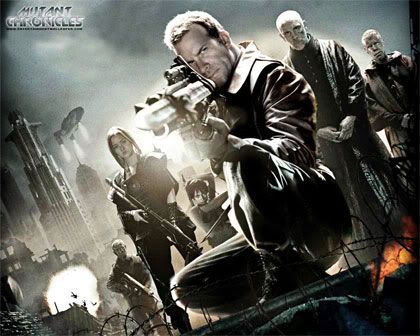
“We’ve got the Punisher, Hellboy, a ninja whore, an elf princess and Cyrus the Virus. We can’t miss!”
The year is 2707. Cataclysmic events on Earth have transformed it into a wasteland, where what resources still exist are fought over by four mega-corporations: Bauhaus, Capital, Imperial and Mishima. An artillery exchange between two of these forces causes the unveiling of an ancient, massive and evil machine that turns the dead and dying into vicious mutants. The horde of the machine’s creations spill out onto the world and soon it’s apparent that conventional warfare can’t stop them. Brother Samuel (Ron Perlman), a senior member of a secret religious order on guard against the emergence of the mutants, assembles a small squad of brave men and women to travel into the heart of the machine and put an end to its evil. In exchange, the volunteers are given visas for family or loved ones to depart the Earth for one of the mega-corporations’ colonies on Mars or beyond. To keep a promise made to a battlefield brother, Sergeant Mitch Hunter (Thomas Jane) volunteers for the holy suicide mission, despite the fact he’s the polar opposite of Samuel. While the warrior-monk is courteous, penitent and hopeful, the soldier is apostate, sarcastic and brutal. Still, before the end Mitch shows that he’s a good man, or at least good enough to be chosen by God.
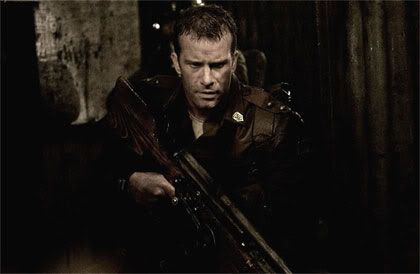
“Right, so my motivation for this scene is ‘Finish it so I can go back to pretending to whore myself instead of doing it for real.’ Got it.”
From my perspective, The Mutant Chronicles had a lot going for it. The aesthetic is an interesting mix of World War I and post-apocalyptic steampunk, and it works in giving the film a feel that is at once unique and familiar. The cast is, by and large, character actors who turn in good performances. The film’s opening sequences, with Ron Perlman’s always excellent narration followed by the trench warfare scene, seemed to indicate the movie was aiming high and might hit the mark. And there’s also the fact that you have Anna Watson and Devon Aoki together in the same flick. It can’t go terribly wrong, right?
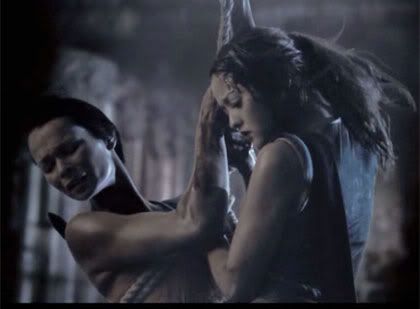
“Devon, I don’t know if they’re going to go for this.”
“Anna, honey, you’re a luscious action babe who doesn’t talk. Trust me. They’ll go for it.”
Unfortunately, as the film goes on, the CG gets progressively worse, the writing takes a bit of a nose-dive and every character killed off takes some of the viewer’s enthusiasm with them. The ending is somewhat predictable, there’s no major character growth or even much character exploration, and the novelty of the aesthetic wears off once the team is in the old city and it becomes another expedition into your standard-issue dark rocky corridors. A lot of this, in my opinion, can be chalked up to bad direction. The director, Simon Hunter, makes the mistake of trying to focus on the spectacle rather than the story. Now, in this case, the story isn’t that great either, but it bears mentioning that even movies with huge budgets in comparison to The Mutant Chronicles fall into this insidious trap.
Let me take you on a tangential example. Say you have a couple of script-writers. They write two different scripts, which get made and released in the same year. One is lambasted by critics despite being a commercial success, and the other is lauded by audiences and the majority of critics alike. Logically, this cannot be the fault of the writers alone. Yes, both scripts have some issues and similarities in style that can have critics calling both films “poorly thought-out and kinda stupid.” However, the first film in our example is directed by someone who is known – perhaps even infamous – for distracting the audience from the weaknesses in the story with massive explosions and slender, panting actresses. The second is directed by more of an auteur, his visions on both the small and big screen noted for their innovation, strong characterization and level of mystery. The latter focuses on the characters, the situations they are in and works to have the audience invested in what happens to them. The former, on the other hand, goes the “tits and explosions” route. The Mutant Chronicles isn’t quite that blatant, but it does fall into the former category.
That’s a shame, really. There are good things about the film, and while I did feel it was overstaying its welcome towards the end, I didn’t consider having watched it a complete and utter waste of time. If nothing else, it’s reinforced my opinion that the good things about a film, be they actors, the script or the overall concept, can be let down when they’re put in the hands of someone inexperienced or incompetent. I’ll elaborate more on these points in tomorrow’s post, but for now, I will say this. If you like any of the listed actors, or want to see a dark future where capitalism is shown to be pretty damn evil, or if you like the idea of steam-powered flying machines, queue up The Mutant Chronicles in Netflix. On the other hand, if you’ve played the tabletop game, you might want to skip this. You might find things to like about it, but on the other hand, you might be like those fans who went to Stark Trek this summer and declared it RUINED FOREVER.
Josh Loomis can’t always make it to the local megaplex, and thus must turn to alternative forms of cinematic entertainment. There might not be overpriced soda pop & over-buttered popcorn, and it’s unclear if this week’s film came in the mail or was delivered via the dark & mysterious tubes of the Internet. Only one thing is certain… IT CAME FROM NETFLIX.

